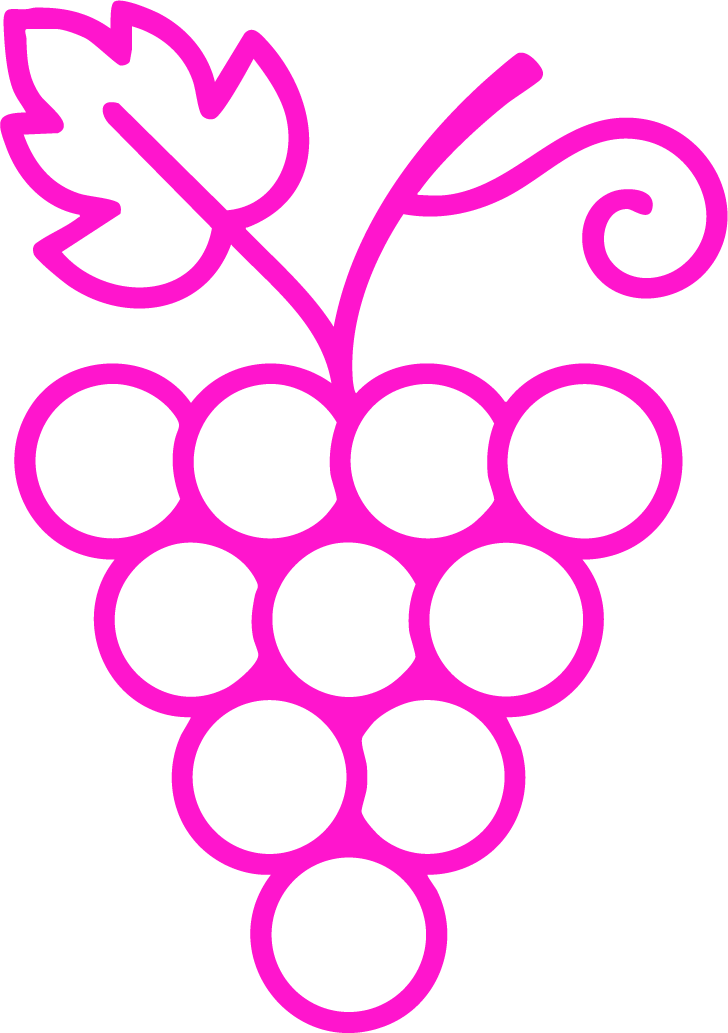Cabernet Franc
🔊 Pronunciation: cab-er-nay fronk
🔍 Quick Summary
Cabernet Franc is the elegant, aromatic parent of Cabernet Sauvignon, prized for its floral lift, savory spice, and food-friendly finesse.
📜 History
Origin: Born in the 17th century in the Basque Country, France — likely a natural parent of Cabernet Sauvignon and Merlot
Medieval Roots: Cultivated in southwest France since the 1600s, especially in Bordeaux and the Loire
Parent of Legends: Crossed naturally with Sauvignon Blanc to create Cabernet Sauvignon
Loire Valley Hero: Found its solo voice in Chinon, Saumur, and Bourgueil
Global Footprint: Spread to Italy, the US, and Canada, thriving in cooler climates
🧠 What to Know
Genetic Legacy: Cabernet Franc is one of the foundational red grapes in Bordeaux blends.
Earlier Ripening: It ripens earlier than Cabernet Sauvignon, making it ideal in cooler regions.
Aromatic Signature: Known for lifted notes of violets, herbs, and graphite.
Versatile Role: Can shine solo or add freshness and structure in blends.
Cool Climate Star: Performs beautifully in regions like the Loire Valley and Ontario.
📍 Where It’s Found
🇫🇷 Loire Valley, France – Limestone + cool climate = light, peppery reds
Cool | 65–75°F (18–24°C) avg daytime highs
🇫🇷 Bordeaux, France – Gravel + maritime = blending grape for finesse
Warm Maritime (65–85°F / 18–29°C)
🇮🇹 Friuli & Tuscany, Italy – Alluvial + warm = lush, herbal expressions
🌡️ Warm | 75–85°F (24–29°C)
🇨🇦🇺🇸Canada & New York, USA – Clay + cool = lean, bright, savory wines
🌡️ Cool | 60–75°F (16–24°C)
🇺🇸 California, USA – Varied soils + sun = riper, fruit-forward bottlings
Warm | 75–90°F (24–32°C)
👅 Flavor & Style
Cabernet Franc offers elegance over power, with red fruit, savory herbs, and silky tannins.
Color: Medium ruby to deep garnet
Aromas & Flavors:
Primary: Red cherry, raspberry, violet, green bell pepper, graphite
Secondary: Toast, cocoa, clove (from oak)
Tertiary: Tobacco, leather, forest floor (with age)
Structure:
Body: Medium
Tannin: Medium
Acidity: Medium-high
Alcohol: Medium-high to high (13.5–15.5%)
🛠 Winemaking Notes
Winemakers often lean into its aromatics and savory edge.
Blended or Solo: Used in Bordeaux blends or as a varietal in Loire reds
Fermentation Flexibility: Can be vinified in stainless steel, oak, or concrete
Gentle Extraction: Preserves perfume and softens green notes
Oak Aging: Light to moderate oak use adds complexity without overpowering
🍽 Food Pairing Ideas
Pairs well with herb-driven dishes and foods that match its moderate weight and acidity.
Savory: Roast duck, lentil stew, herb-crusted pork tenderloin
Cheese: Chèvre, Manchego, aged Gouda
Unexpected: Falafel wraps, ratatouille, truffle popcorn
🔗 Related Topics to Explore
🍇 Cabernet Sauvignon – Its famous, fuller-bodied offspring
🍇 Merlot – Another sibling in the Bordeaux blending family
📍 Loire Valley – Cool-climate haven for Cab Franc
🌱 Limestone Soils – Elevates acidity and elegancestyle




